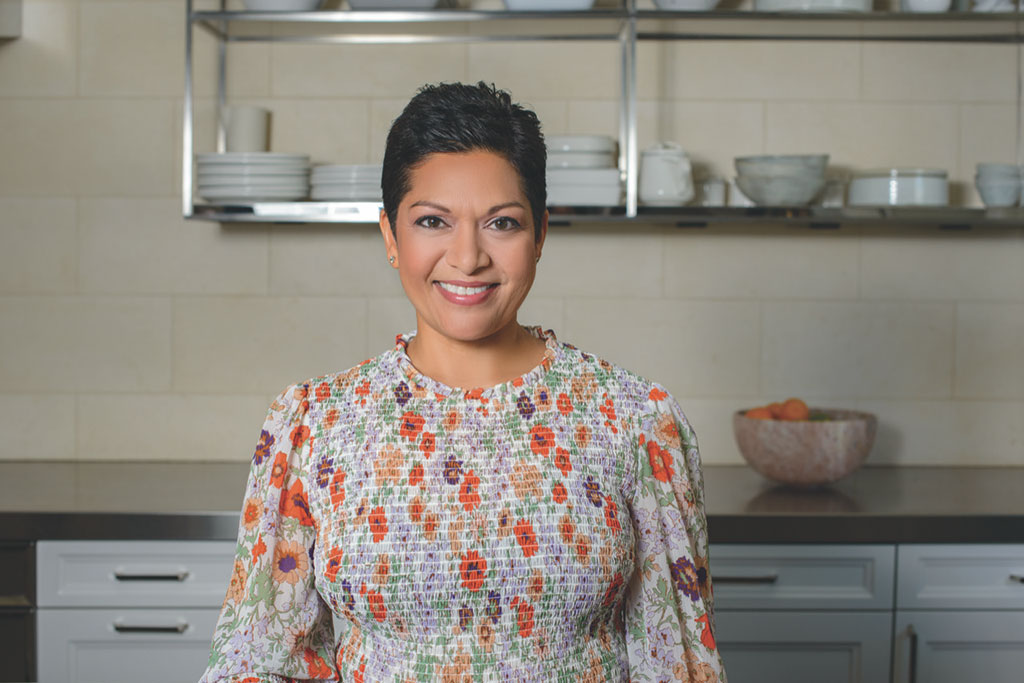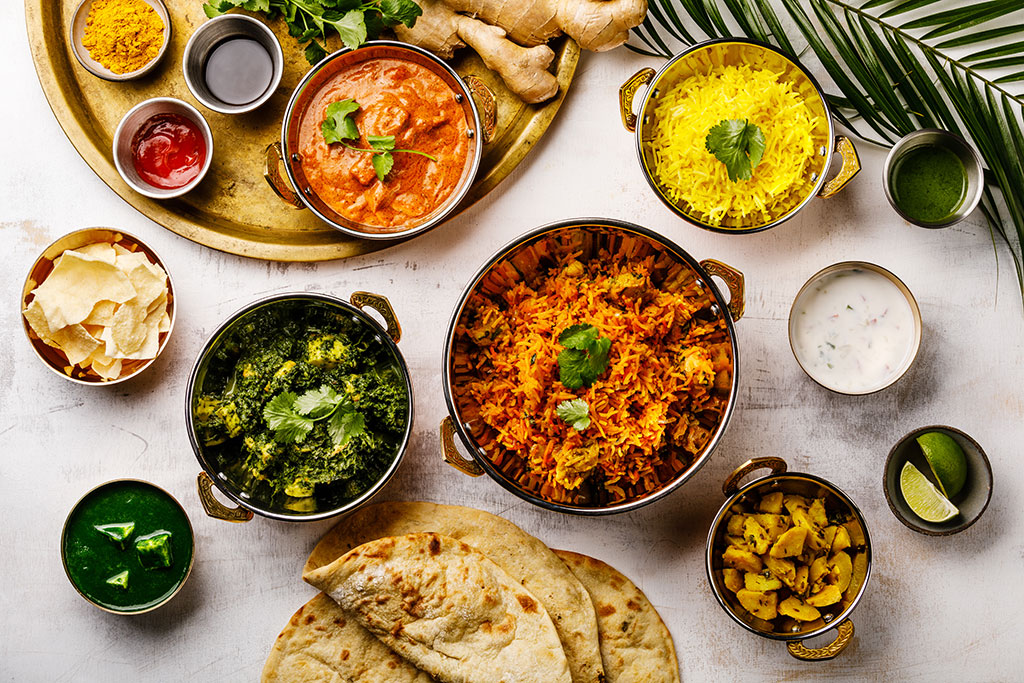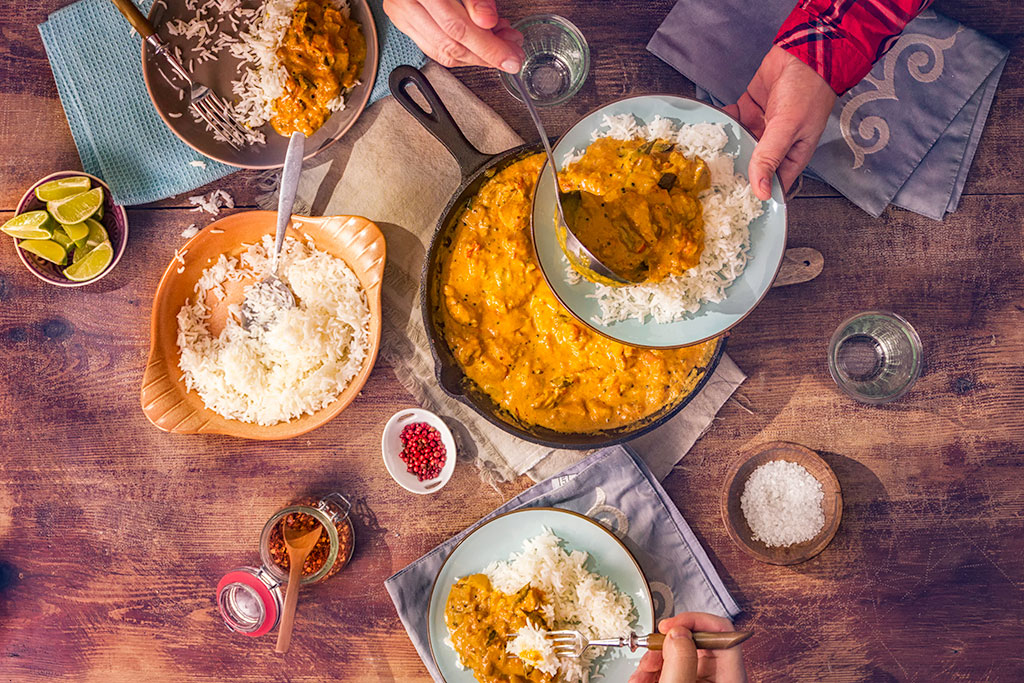Interview with Aunty Singla
Photos by Getty images, unless noted
What was your life like growing up?
I was born in Punjab, India, but moved to Pottstown, Pennsylvania, at age three. My family settled in nearby King of Prussia when I was in fifth grade. There were hardly any Indians in our community: one other family in our neighborhood and maybe two or three other kids in our school.

© Andrew Miller | Andrew Miller photography
In my early years, I pushed away things like Indian food because I wanted to be like everybody else—I was determined to eat Steak-umms at home and Chick-fil-A and Boardwalk Fries at the mall. But we had Indian food just about every night at dinner; even our spaghetti sauce would have cumin seeds. I would fight my mom on it, but now I’m cooking the same way for my kids.
What changed for you?
A turning point was when India celebrated its fifty-year anniversary of independence in 1997. The Philadelphia Museum of Art unveiled a big exhibit for it, which I covered as a reporter. With this commemoration, people started to understand what India was—more than stereotypes like widespread poverty and eating with your hands—and I began to truly appreciate our rich culture of food.
How did you go from being a reporter to a cookbook author?
In Chicago, I covered the 3:00 a.m. news. I loved it, but it was difficult. My husband has always traveled Monday through Friday, so I felt like a single mom juggling everything during the week. It just wasn’t working; I couldn’t get up the energy to cook. I would often sit in the news truck and cry because my young girls were home without me and weren’t eating the way I wanted them to.
I wanted to reset my kids’ palates, and I’d always had an inkling to write a slow-cooker cookbook because my mom, being a full-time worker herself, had raised us on Crockpot Indian cooking. So I started my blog, Indian as Apple Pie, in 2009 while compiling her recipes into a book. Despite many rejections, I eventually found a publisher and sold around 100,000 copies. It was mind-blowing: a no-name author, self-trained in the kitchen, writing a successful cookbook.

Do you have any other culinary heroes?
My paternal grandfather, who lived in a tiny village in Punjab, was also a big influence. He was a huge foodie—he’d travel throughout the region, bring back recipes to make, and share stories about them. When he visited us in America, he’d teach me how to cook amazing spicy recipes, which I loved. Now my mom gets mad at me for putting so much heat in a dish, but my dad always says, “This is so good!”
How challenging is it to write a cookbook?
Have you ever given birth? [Laughs] That’s what I compare writing a cookbook to. People don’t realize that you don’t just simply gather all the groceries and create a recipe. You have to cook it, test it, and retest it; because I’m relatively small potatoes, my family are my taste testers. Then you must figure out what to do with all the food you made. I give it away, which is work in itself. And so many dishes pile up.
So cookbook writing is really challenging. It especially was for my latest book, Instant Pot Indian, because I essentially wrote three books in one: each recipe is broken down into three different Instant Pot sizes. But I love what I do, and I’m excited about being able to pass these recipes down to my girls.

Tell us about your Indian as Apple Pie product line:
That was inspired by my neighbor Christine, who loved my recipes but could never find the ingredients to make them. I realized that Indian could never be a mainstream cuisine until it was easily accessible to American households. That’s been my main mission with Indian as Apple Pie: I want to break the preconceived notion that our recipes are complicated. They can be as simple as those of any cuisine if they’re easy to digest, no pun intended. People think they need dozens of spice blends when they only need six or seven key spices supplemented with one or two spice blends.
For example, a restaurant’s chickpea curry may have six to eight spices; to re-create it, you’d have to spend $40 to get all the spices if you’re starting from scratch. That won’t work for most people, which is why we launched our spice kits in 2023—if you just want to give Indian cooking a try, they are a perfect entry point. We’ve been inundated with orders for them ever since.
What other misconceptions exist about Indian food?
Misperceptions are very much a problem. To start, many people don’t even realize that curry powder isn’t part of our cuisine. Another common one is about bread: we don’t eat naan regularly. It’s baked in a tandoor oven, which most people don’t have. Instead, we usually make roti, a tortilla-like flatbread.
A final big assumption is that Indian food is unhealthy. Indian restaurants, just like any other business, want you to keep coming back, so they add cream and extra oils. However, my specialty is homestyle Indian cooking, which is very clean and very light on the oil. Also, Indian cuisine is naturally gluten-free. Now that I make it at home, I’m the healthiest I’ve been since high school and it’s made a huge difference for my family overall.

In your opinion, are Americans more open today to different cuisines?
Yes. I really think the idea that small-town America resists diversity is just a myth. We have come such a long way in this country in terms of diversity—it’s phenomenal. Granted, there are always going to be those who aren’t open-minded, but you’ll find that’s the case everywhere in the world. In fact, the biggest resistance I get is often from my own Indian community because they’ll dismiss my recipes as not being up to their standards.
What’s next?
I’m excited to say that I’ll be hosting the first public-television Indian food show. What’s so amazing about it is that I literally learned how to speak English by watching Sesame Street on a little black-and-white television. So this will bring everything full circle.
For more info, visit indianasapplepie.com
22 Views